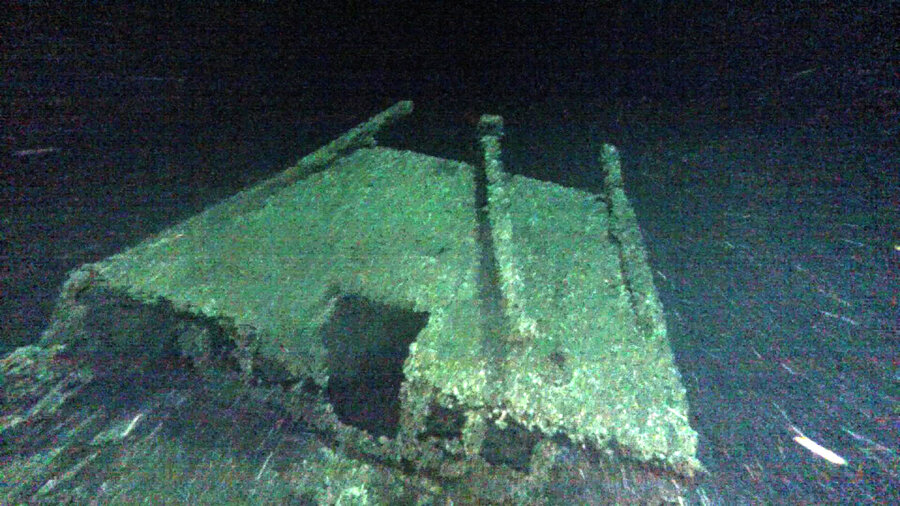Unusual Lake Ontario 1872 shipwreck identified as Black Duck
Loading...
Shipwrecks aren’t unusual in the Great Lakes, but the wreck of the Black Duck surprised explorers who discovered the sunken ship in Lake Ontario in 2013.
The Black Duck is a one-masted ship known as a scow-sloop, a type of boat that was not typically used for Great Lakes travel, as its small size made it vulnerable to the Great Lakes’ famed squalls.
What can shipwrecks like this one teach us about the past?
Historians and archaeologists say that ships like the Black Duck shed light on the history of commerce and trade that took place on the Great Lakes.
“Finding boats that were atypical on the Great Lakes helps us to more fully appreciate the ingenuity and entrepreneurship of our forefathers and better understand the complexity of Great Lakes history,” said National Museum of the Great Lakes museum director Christopher Gillcrist, according to the Toledo Blade.
Explorers Jim Kennard and Roger Pawlowski were unable to investigate the ship when they first discovered it in 350 feet of water in 2013. Although they found the ship using deep scan sonar, the Toledo Blade reports that they were unable to explore further due to the effects of deep water on their remotely operated vehicle.
Finally, after three years of waiting, Mr. Kennard and Mr. Pawlowski returned to the shipwreck this year. In September, they identified the shipwreck as the Black Duck, making it the only fully intact scow-sloop shipwreck in the Great Lakes.
Short and squat, scow-sloops were used to transfer cargo from deepwater ports to nearby harbors that had shallow channel. Their flat bottoms and fronts made it easy for them to dock and unload, whether on beaches or at ports. Unfortunately for the Black Duck, however, the same qualities that made it and other scow-sloops useful for coastal shipping also made them unwieldy and vulnerable to storms in the open water.
“Scows, because of their shape, are workhorses,” said National Museum of the Great Lakes archaeologist Carrie Sowden, according to the Associated Press. “They’re not there to move fast through the water. They’re there to carry a lot of cargo.”
Historians say that the Black Duck is a rarity in the Great Lakes - only a handful of scow-sloops were even built in the area, and few were used on big lakes such as Lake Ontario.
The Black Duck sank in August, 1872, after it got caught in a storm and sprang a leak. The ship was attempting a 40-mile trip from Oswego to Sackets Harbor. The ship’s three occupants, the captain, a crewmember, and the captain’s wife, all escaped on a small boat, and made it to safety about eight hours later.
Explorers have discovered a number of sunken ships in the Great Lakes in recent years.
In August, Kennard and Pawlowski made another momentous discovery - the second oldest shipwreck found in the Great Lakes.
Found near Oswego, N.Y., the same area in which Kennard and Pawlowski discovered the Black Duck, the Washington last saw daylight during a storm in 1803.
Historians and archaeologists say that ships like the Washington are valuable because they can teach researchers about the type of ship construction techniques that shipbuilders used between the American Revolution and the War of 1812.
The Washington is the oldest commercial sailing vessel found in the Great Lakes and the only sloop known to have sailed on lakes Erie and Ontario, Kennard said. Single-masted sloops were replaced in the early 19th century by two- and three-masted schooners, which were much easier to sail, said Ms. Sowden.
The 53-foot-long ship was carrying at least five people and a cargo of merchandise, including goods from India, when it set sail from Kingston, Ontario, for its homeport of Niagara, Ontario, on Nov. 6, 1803. The vessel was caught in a fierce storm and sank.
The oldest shipwreck in the Great Lakes is the HMS Ontario, which sank in Lake Ontario in 1780.








